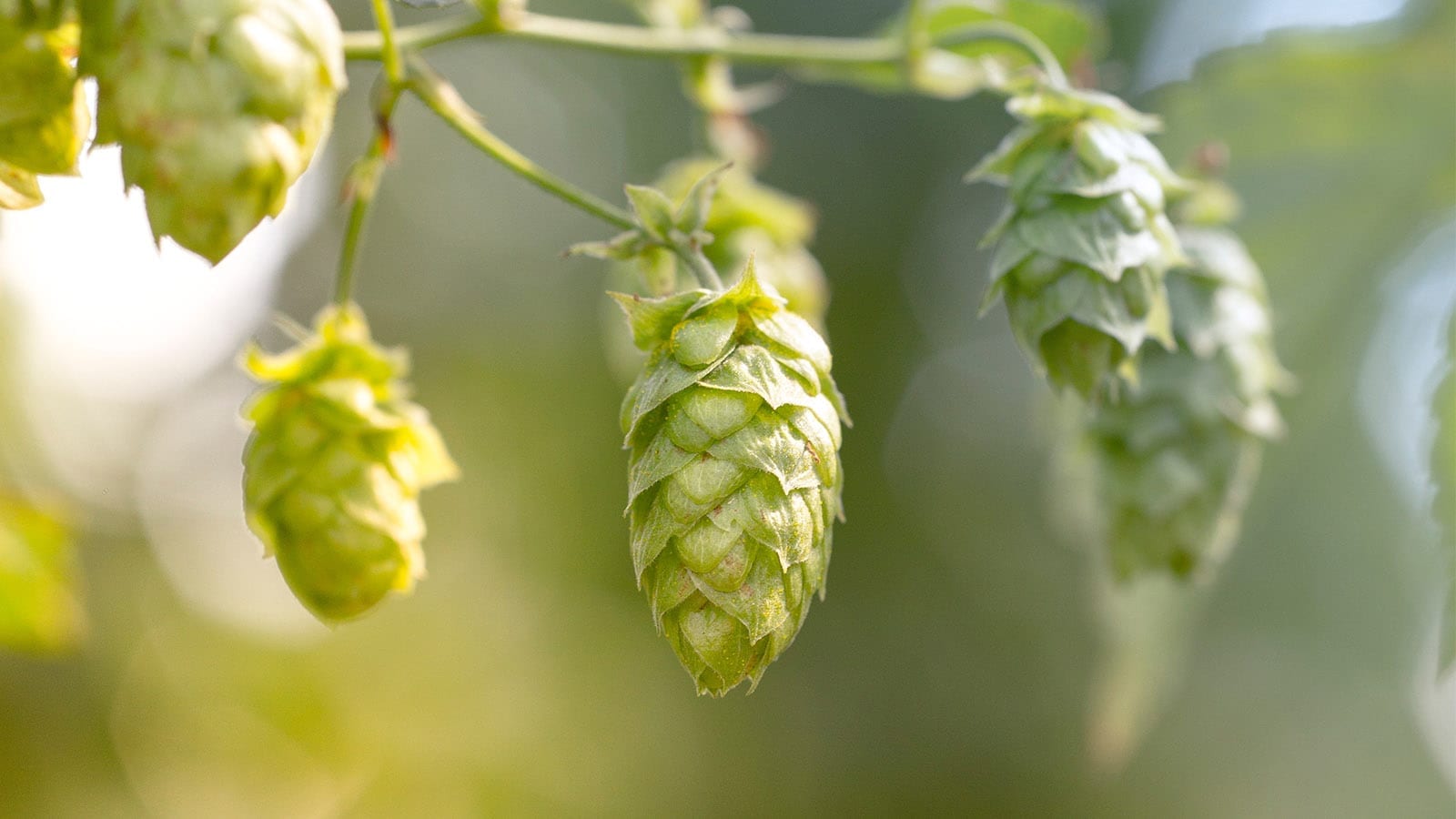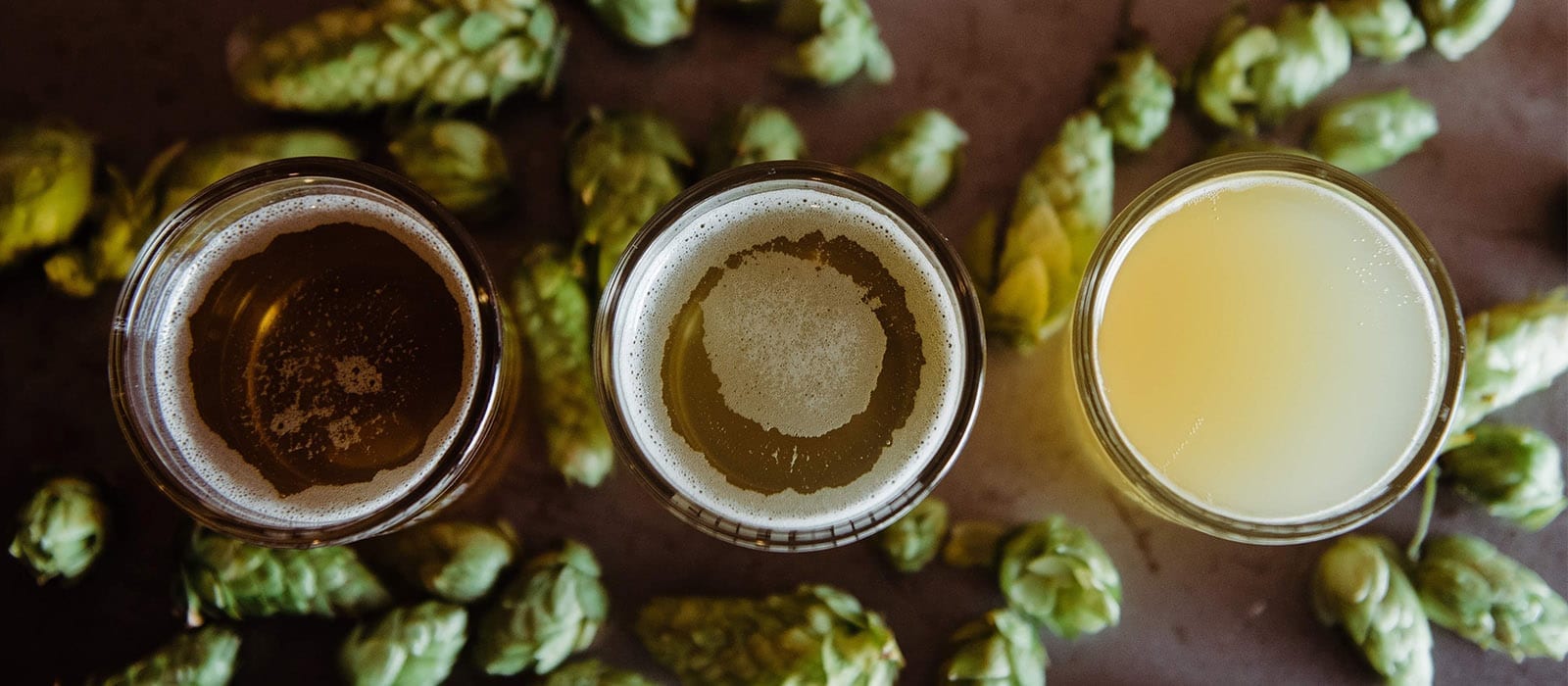For the Love of Hops!!
For the Love of Hops!!

‘Not everybody loves hops and nor should they. Not all of the best beers are hop bombs and never will they be. But for those of us who have had their beer world turned upside down by the influx of new varieties of distinctive and even more delicious hops (to the extent that we can’t really drink the “old” beers we grew up with) we just LOVE HOPS!!
Hops are of course just wonderful things – the smell and the taste are almost addictive. This may not surprise you when you consider that they are in the Cannabaceae plant family that also includes the genus Cannabis!! So you are now thinking “Ok, right, it’s now all starting to add up… that’s why I can’t resist the Pales, IPAs and DIPAs and why I now hurry past the beer aisle in the Supermarket!!”
So what do hops actually do in beer? Well hops are used for three distinct purposes in brewing: for bittering, for flavouring, and for aroma. In addition hops also possess resins that help “head retention” and add antiseptics to retard beer spoilage.
Now, there are literally hundreds of varieties of hops available and each variety has its own unique character and chemical make-up. And each of those characteristics will be expressed differently in the beer depending on how the hops are used in the brewing process. Hops can be used at 5 different stages in the brewing process, to attain 5 separate effects on the beer, the balance of each varying relative to the amount of hops used and/or the time the hops are in situ.
The 5 stages are:
- Mash Hopping – where the hops are added directly to the mash tun.
- First Wort Hopping – where the hops are added to the boil at the start of the lautering process which separates the clear liquid wort from the residual grain solids.
- Bittering Hops – where hops are added at the boiling stage.
- Late Hopping – where the hops are added in the last 5-15 minutes of the boil.
- Dry Hopping – where hops are added after the beer has fermented. Do this twice for DDH beers (Double Dry Hopping).
The properties Brewers require from hops are found in the lupulin gland. Herein are the oils and resins which give beer its bitterness, antimicrobial properties, aroma and flavour. Each variety of hop imparts different levels of flavour intensity from these resins and oils whilst the alpha acid content in the lupulin imparts the level of bitterness.
In Britain back in the early days of beer production spices and herbs were used to flavour beer but at the close of the middle ages things changed with the sole reason for adding hops being to preserve the beer in good condition: the bittering effect was reluctantly accepted by Britain’s beer drinkers.
Hops then became an essential ingredient in getting beer to British Empire troops around the world and to India in particular. Imperial or India Pale Ales (IPA’s) are characteristically heavily hopped with high alcohol content, so the beer could survive the long trip to India, hops being antimicrobial and alcohol being a sterilant.
Even so we come from a tradition in Britain of beers (ales) that are not all that “hoppy” even if they do contain lots of hops. Our ales use British hop varieties such as Goldings and Fuggles that result in flavours that are more malty, rounded, softer and milder (less bitter) than today’s juicy, zingy craft beers. Both Goldings and Fuggles have a relatively low alpha acid content and flavour intensity as compared to non British New World hops which have helped to create the craft beer explosion of recent years.
So let have a look at how some different hops compare in terms of bitterness (alpha acids) and flavour intensity.
Goldings; The most well known of English hops. Has spicy, honey and earthy characteristics. Alpha: 4+ Flavour Intensity: 6
Fuggles; Another well known English hop. Has grassy, minty and earthy characteristics. Alpha: 4+ Flavour Intensity: 5
Citra; The poster child of American “flavour” hops. Has characteristics of mango, tropical fruit and lime. Alpha: 11-14 Flavour Intensity: 9
Cascade; Also an American flavour hop. Has floral, lychee and citrus characteristics. Alpha: 5-9 Flavour Intensity: 9
Simcoe; Another well known American hop. Has pine, grapefruit and passionfruit characteristics. Alpha: 11-15 Flavour Intensity: 9
Chinook; Again, a well known American hop. Has grapefruit, citrus and pine characteristics. Alpha: 11-15 Flavour Intensity: 9
Most everyday beer drinkers (not Wishfullers!!) can’t distinguish very easily between different kinds of bitterness in a beer. It’s more about the straight level of bitterness high or low. What we do notice however is flavor and aroma. Those components, inextricably linked, are what in particular make us like or dislike a particular brew given a decent level of bitterness. So what are the hop ingredients or “spices” that brewers commonly have at their disposal? Here is an abridged listing of some of the more commonly used hop varieties employed for flavor and aroma:

AMARILLO, CASCADE, CENTENNIAL, GALAXY, SUMMIT, HULL MELON, AND CITRA
These are some of the favored hops for imparting big floral, fruity, tropical, grassy, and citrus flavors and aromas.
CHINOOK, SIMCOE, COMET, EUREKA, MOSAIC
These hops tend to lend piney, woody, and grassy notes (though Mosaic is commonly used for single-hop beers because it also has great citrus and floral qualities).
CRYSTAL, HALLERTAU, LIBERTY, NUGGET, SAAZ
These are some of the more “Old World” style hops; they’re spicy, fruity, and earthy; classically used more in German lagers and similar styles.
Getting all of these different variables – the right hops, the right quantities, the right combination of varieties, all added at the right stage in the brewing cycle, for the right period of time – all express the skill of the brewer as he toils to produce your favourite brew. And maybe this goes to explain the craft brewers psyche that will leave no hop unturned until the perfect combination is found. One reason perhaps why craft brewers brew a beer just the once – no matter how perfect we may find it – and then go on to the next brew, never returning to their sublime creation no matter how disappointing and frustrating that may be for us.
That said, that may be better than the alternative of Fuggles and Goldings based beers, which some of us now cannot find in our palates to tolerate such is the alternative explosion of aromas and tastes available from new hop varieties in the craft beer world.
So, this has been for the hop lovers out there!!!
Come on In!
SUN - THURS
12:00pm - 11.00pm
FRIDAY
12:00pm - 11.30pm
Saturday
11:00am - 11:30pm
Last order 30 mins before closing
Contact US
Phone Us
07477 495 015
Email Us
Address
124, High Street, Rickmansworth,
Hertfordshire, WD3 1AB
